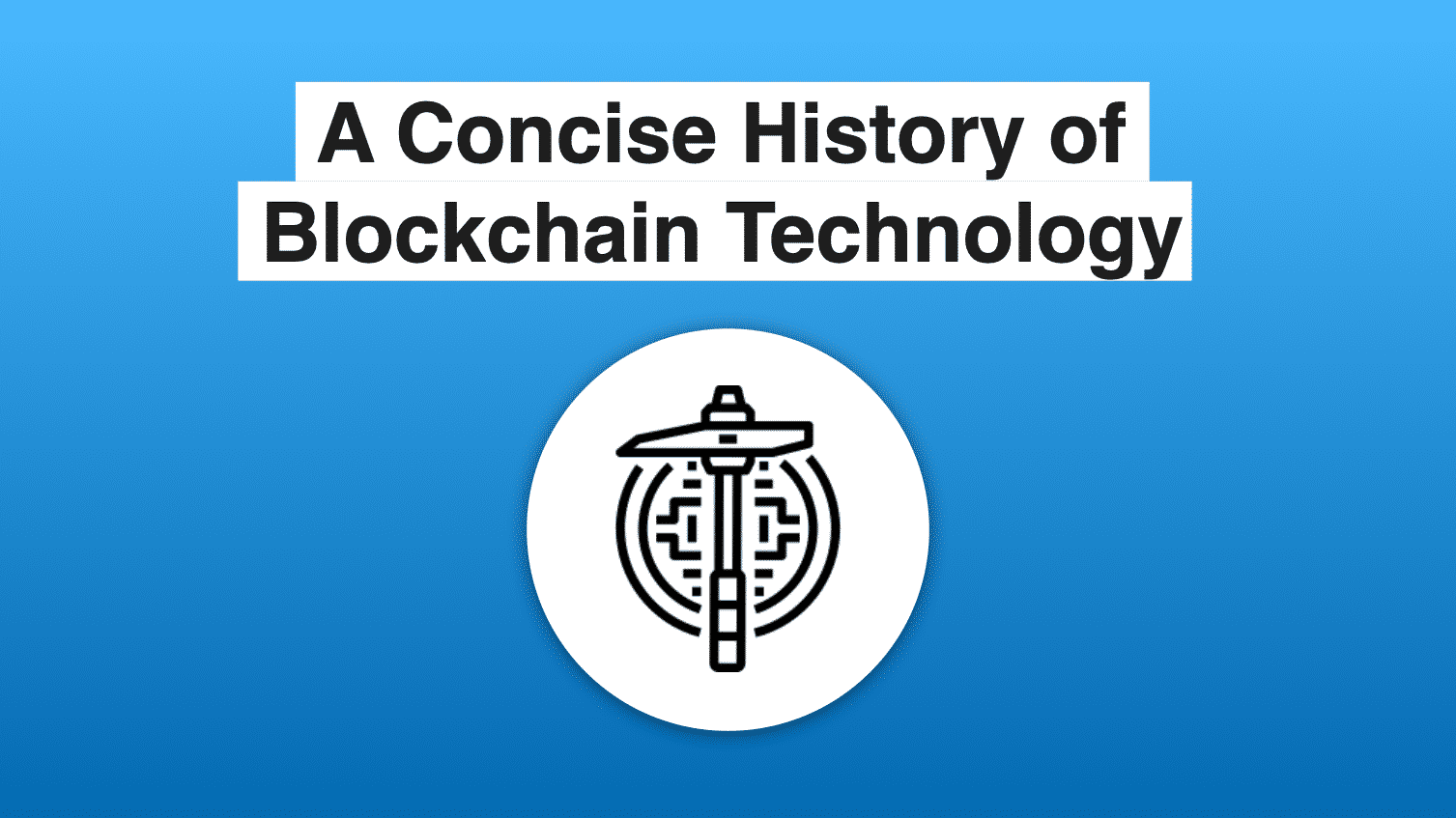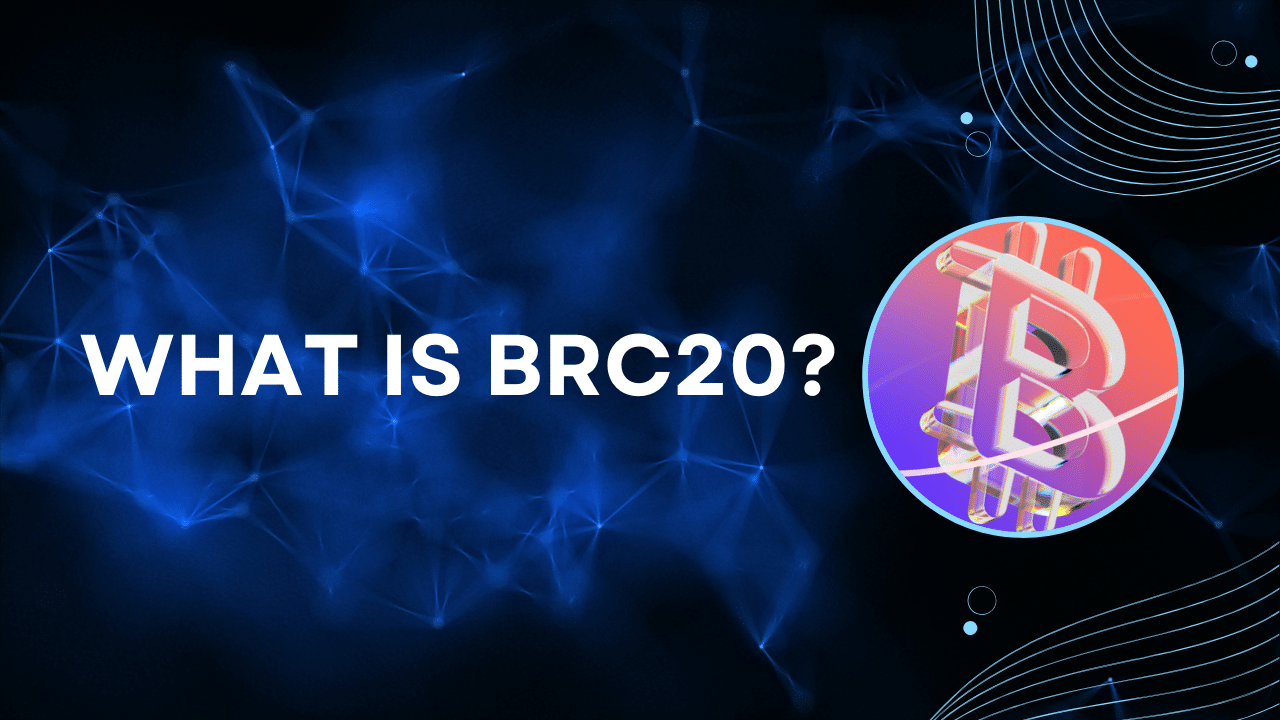Contents
|
|
Blockchain technology is one of the key pillars and an integral part of how cryptocurrencies work. It allows cryptocurrency to move trustlessly from one person to another and keeps a record of all the transactions. Any concise history of blockchain technology should start with Bitcoin. Bitcoin was the first major innovation of blockchain technology that has now extended into everything from insurance, supply chains, healthcare, voting, transportation, and more.
Blockchain technology has been a topic of research since the early 90s and was used as a database structure to store documents and hashes. Today, blockchain technology provides a foundation for the new form of ‘digital trust’, where users across the network can transfer value and information without relying on a central intermediary. This new form of digital trust will bring disruption across various industries that rely on ‘gatekeepers’.
To understand blockchain technology and its implications beyond the realm of cryptocurrencies, we need to learn the history of blockchain to realize the potential of this new form of digital trust that has the potential to disrupt industries across various sectors.
Contents
Blockchain Inventor
Blockchain made its public debut with Bitcoin when Satoshi Nakamoto published a whitepaper back in 2009. There’s no single blockchain inventor, however, the origins of blockchain technology can be traced back to 1991 when a physicist Stuart Haber and cryptographer W Scott Stornetta released a research paper titled, “How to time-stamp a digital document”.
The research paper discussed the immutability of digital records with a Time Stamping Service (TSS) that uses hash functions and digital signatures to verify the originality of a specific document. The documents are chained together to generate a time sequence to verify the time-stamps associated with each document. This chain of documents with a time sequence was the simplest version of blockchain that was later used by Nick Szabo in Bit Gold, an early version of the digital currency.
Fast forward to 1998, a renowned computer scientist Nick Szabo started working on an idea of a decentralized currency, which he called ‘Bit Gold’. He published a whitepaper where he proposed a time-stamped hash chain (blockchain) that can solve the double-spending problem using hashcash, an early version of the Proof-of-Work system to limit spam on internet forums and emails.
Bit Gold introduced the concept of value based on the cost of computational resources. The value of the ‘bits’ is calculated based on a complex mathematical equation. All the bits are stored on the blockchain together with their value that is correlated with the cost of their computation.
The idea of Bit Gold didn’t materialize as Nick Szabo was not confident about the implementation. The biggest shortcoming of Bit Gold was the correlation between value and cost of computation. In Bitcoin, Satoshi Nakamoto separated the value from computation cost, and the value is determined by the open market.
If the value is directly correlated with the computation cost, it can create discrepancies in the network as one coin will be higher in value than the other, just because of the underlying computation cost. In the case of Bitcoin, the value of a single Bitcoin mined in 2010 has the same value as the Bitcoin mined today. If Bitcoin’s value was correlated with the computation cost, then all the Bitcoins mined in 2010 will be way cheaper than Bitcoins that are mined today, because the computation needed to mine a Bitcoin in 2010 was much lower.
In 2000, Stefan Konst proposed the idea of cryptographically secured chains in a research paper titled “Secure Log Files Based on Cryptographically Concatenated Entries”. He presented a model where entries in the chain can be traced back from the genesis to prove the authenticity, the same model we see in Bitcoin and other cryptocurrencies today. In 2008-9, Satoshi Nakamoto released the whitepaper of Bitcoin by accumulating all the ideas of a distributed ledger coupled with the secure cryptographic functions, presenting a practical use-case for blockchain.
A brief history of blockchain:
1991
A cryptographically secured chain of blocks is described for the first time by Stuart Haber and W Scott Stornetta
1998
Computer scientist Nick Szabo works on ‘bit gold’, a decentralised digital currency
2000
Stefan Konst publishes his theory of cryptographic secured chains, plus ideas for implementation
2008
Developer(s) working under the pseudonym Satoshi Nakamoto release a white paper establishing the model for a blockchain
2009
Nakamoto implements the first blockchain as the public ledger for transactions made using bitcoin
2014
Blockchain technology is separated from the currency and its potential for other financial, interorganisational transactions is explored. Blockchain 2.0 is born, referring to applications beyond currency
The Ethereum blockchain system introduces computer programs into the blocks, representing financial instruments such as bonds. These become known as smart contracts.
What Is A Blockchain Protocol?
A blockchain protocol is a combination of blockchain technology with a network, governance, and consensus mechanism. A blockchain is any distributed ledger that can store data in a hash chain, whereas a blockchain protocol is a technology stack with different layers, similar to the TCP/IP protocol used in the modern internet.
We can draw a lot of parallels between TCP/IP and blockchain protocol. TCP/IP was first used for bilateral messaging through email, and blockchain protocol is used for bilateral transfer of value (financial transactions). At its core, TCP/IP is a communications protocol that enables the exchange of information, and blockchain enables the exchange of value.
To understand the value capture in TCP/IP and blockchain protocols, Joel Monegro put together a ‘fat protocol‘ thesis where he describes that TCP/IP is a ‘thin’ protocol with ‘fat’ applications, whereas blockchains are ‘fat’ protocols with ‘thin’ applications. In TCP/IP, most of the value is captured at the application layer, and in blockchain protocols, the real value is captured at the protocol layer.
In the blockchain protocols, the value concentrates at the protocol level because of the shared data layer and economic incentivization with a unit of value (coin or a token). Unlike TCP/IP, the data in blockchain protocols isn’t confined to centralized applications and is available on an open and decentralized ledger.
This data availability across the shared ledger is a cornerstone for innovation. It allows new entrants to benefit from the existing data, build competitive products, and reduce the barrier-to-entry that is prevalent in the centralized ecosystem.
History Of Blockchain Consensus
The consensus mechanism serves as a key component when it comes to maintaining the single global state of the blockchain and establishing finality through digital trust. Finality is a guarantee that the transactions are now immutable and part of the blockchain. The consensus mechanism solved the age-old problem of ‘double spending’ by allowing protocols to verify each transaction since the genesis block and making sure all the data that goes on the blockchain is immutable.
What is Double Spending?
Double spending refers to a flaw in the early variants of the digital cash system, in which a single digital coin can be spent more than once. If you have a $10 bill, you can only spend that once. If you spend $10 in a digital form (using debit card or PayPal), the payment processor ensures that money is deducted from your account. However, in a decentralized mechanism without the bank or a central intermediary, it is difficult to keep track of ownership. Consensus mechanisms solve the double spend problem by keeping track of the ownership of coins from the genesis block (the first block on the blockchain). If you spend a coin, the ownership changes and the transaction is recorded on the blockchain.
Hashcash
Hashcash was the earliest form of consensus mechanism that inspired the design of Bitcoin’s Proof-of-Work model. Hashcash was the brainchild of Adam Back, a prominent British cryptographer and cypherpunk. The idea of hashcash was to limit the spam on emails and the early days of internet forums.
Adam Back proposed a solution in his paper published in 2002, where each user has to compute a complex mathematical equation before posting anything on a forum or sending an email, and he called it the Proof-of-Work. Imagine a user sending 1,440 messages every day without any delay. If he has to compute a mathematical equation that takes 1 minute to solve before sending a message, it will reduce the number of messages he can post by 50%.
This approach was the earliest form of spam prevention technique. Satoshi Nakamoto used the same approach for Bitcoin’s Proof-of-Work model but with a more sophisticated implementation.
Proof of Work
Satoshi Nakamoto combined the Proof-of-Work concept from Hashcash with the blockchain and created a global and immutable distributed ledger for Bitcoin. In Bitcoin’s Proof-of-Work consensus algorithm, the miners have to solve a complex mathematical equation using specialized hardware. The equation is very hard to compute, but easy to verify.
If a miner solves the equation and the entire network verifies the answer, he is rewarded with a few bitcoins (currently 6.5 BTC per block) along with all the fees of transactions he included in his block. Proof-of-Work is not just a de-facto consensus mechanism used in Bitcoin. It is currently being used in Ethereum, Litecoin, Dogecoin, and others.
Proof of Stake
Next up, we have the Proof-of-Stake consensus mechanism that is most widely used across all the major blockchain protocols we see today. Ethereum, the second-largest network with the Proof-of-Work consensus mechanism, will also move to Proof-of-Stake in the upcoming Ethereum 2.0 upgrade.
In Proof-of-Work, you spend resources in the form of electricity, equipment, and computing power to solve the equation. In the Proof-of-Stake consensus mechanism, you buy a ‘stake’ in the network by depositing your tokens and become a validator. If you act maliciously, your stake (or portion of your stake) is burned/slashed, which means that you lose your funds permanently in a penalty. Proof-of-Stake has the same incentive model where you either get the block reward, transactions fees, or both. Here is an illustration to visualize the differences between Proof-of-Work vs Proof-of-Stake.
Proof-of-Stake has many different variants, one of which is Delegated Proof of Stake (DPoS), where the ‘delegates’ are elected by a voting process among the users who have a stake in the network. The delegates are responsible for block production and finality. If a delegate acts maliciously, users can vote him out and assign another delegate.
Proof-of-Stake based blockchain protocols have higher transaction throughput because the system doesn’t rely on physical resources or high infrastructure costs, which also makes them more environmentally-friendly.
Proof of History
Proof-of-History is a relatively newer consensus mechanism launched by Solana. It uses a Verifiable Delay Function so all the participants in the network can reach a consensus on ‘time’ to avoid the ‘longest chain rule’. Proof-of-History is the ‘clock’ of the network, and it works in conjunction with the TowerBFT algorithm, which prevents malicious attacks on time parameters. When validators on the network vote for a specific block, they have to receive a confirmation from Proof-of-History before they can vote on the next block. The blockchain consensus is an ever-evolving space, as protocols seek new and efficient ways to achieve consensus and finality on the blockchain. Proof of Authority and Proof of Burn are two of the recent consensus mechanisms we have seen, and there are a lot more in the pipeline.
What Was Blockchain First Used For
Before the public launch of the Bitcoin mainnet, blockchain technology was merely the topic of research. Satoshi Nakamoto gave a practical use-case to blockchain technology by making it part of a bigger protocol, which we now call the blockchain protocol. The first major innovation of blockchain technology was Bitcoin that aimed to democratize currency after the 2008 financial crisis. Bitcoin is the new form of digital gold, a new asset class for the store of value. With Bitcoin, we saw the first generation of blockchain technology, the blockchain 1.0, a super-secure distributed ledger to record and transfer value. Ethereum laid the foundation of the second generation of blockchain technology, the blockchain 2.0, which can not only transfer value but allows the execution of smart contracts to build decentralized applications. This flexibility opened up a new dimension of Decentralized Finance (DeFi) to enable use-cases such as lending, borrowing, staking, and yield farming. Over just a few years, DeFi has grown to become a $71.8 Billion industry and has been growing at a much faster pace.
In recent years, blockchain technology has made its way to enterprises and institutions, as they see a massive opportunity by adopting blockchain to cut costs and improve certain business processes. Surprisingly, the adoption is mainly coming from traditional financial institutions as they seek to improve their processes around cross-border payments and settlements.
Bitcoin Blockchain History
The Bitcoin blockchain is very simple yet powerful. Satoshi Nakamoto launched the Bitcoin network after the 2008 financial crisis, with this simple message that he embedded in the genesis block. This can be thought of as the start of bitcoin blockchain history.
The bitcoin blockchain doesn’t provide much flexibility in terms of building applications on top of it, but provides a robust economic security model that secures the network with an extraordinary amount of hash power.
Bitcoin is sound money; it’s the digital gold. Due to its powerful economic security model, Bitcoin dominates the entire cryptocurrency space and holds 45.9% of the market share as of writing. Last month, Taproot got activated on the Bitcoin network, which was a long withstanding upgrade that brings more security and an ability to run limited smart contracts on top of the Bitcoin blockchain.
History Of Blockchain Ethereum
Vitalik Buterin, one of the co-founders of Ethereum, wanted to bring flexibility to the Bitcoin network by introducing smart contracts. However, due to the consensus rules of the Bitcoin network, he realized that the Bitcoin blockchain isn’t suitable for running applications on top of it.
Vitalik Buterin launched the Ethereum blockchain on July 30, 2015. Ethereum blockchain was designed to run applications on top of it, giving rise to newer use-cases that can form industries such as Decentralized Finance (DeFi).
The major innovation in the Ethereum Blockchain was the Ethereum Virtual Machine (EVM), which is Turing-complete meaning that it can run any general purpose program and allows the execution of smart contracts directly on the Ethereum blockchain. Unlike Bitcoin, the Ethereum blockchain has gone through several upgrades, and gave rise to an ecosystem of decentralized applications.
Due to the massive utility of Ethereum due to its ever-growing ecosystem and popularity, several Layer-2 solutions have been developed to overcome the limitations of Ethereum such as high gas costs and low transaction throughput. Ethereum is soon shifting towards Proof-of-Stake consensus in the Ethereum 2.0 upgrade that will bring further scalability and efficiency.
Conclusion
Blockchain technology made its public debut in Jan 2009 with Bitcoin, providing means for a decentralized, borderless, permissionless and trustless exchange of value without any bank or a central intermediary. Blockchain has disrupted currency, and is now disrupting various industries by bringing in a new form of ‘digital trust’.
Blockchain is the new form of internet 2.0 and money 2.0!








